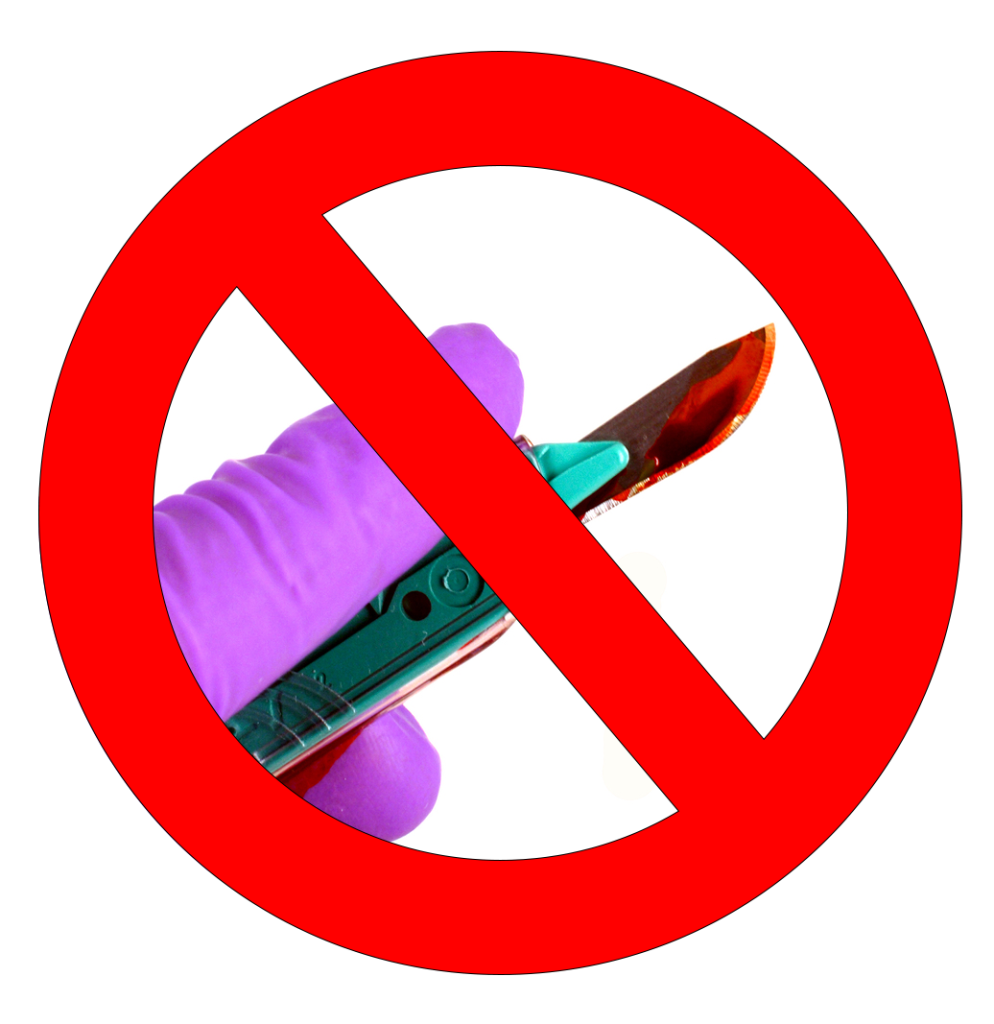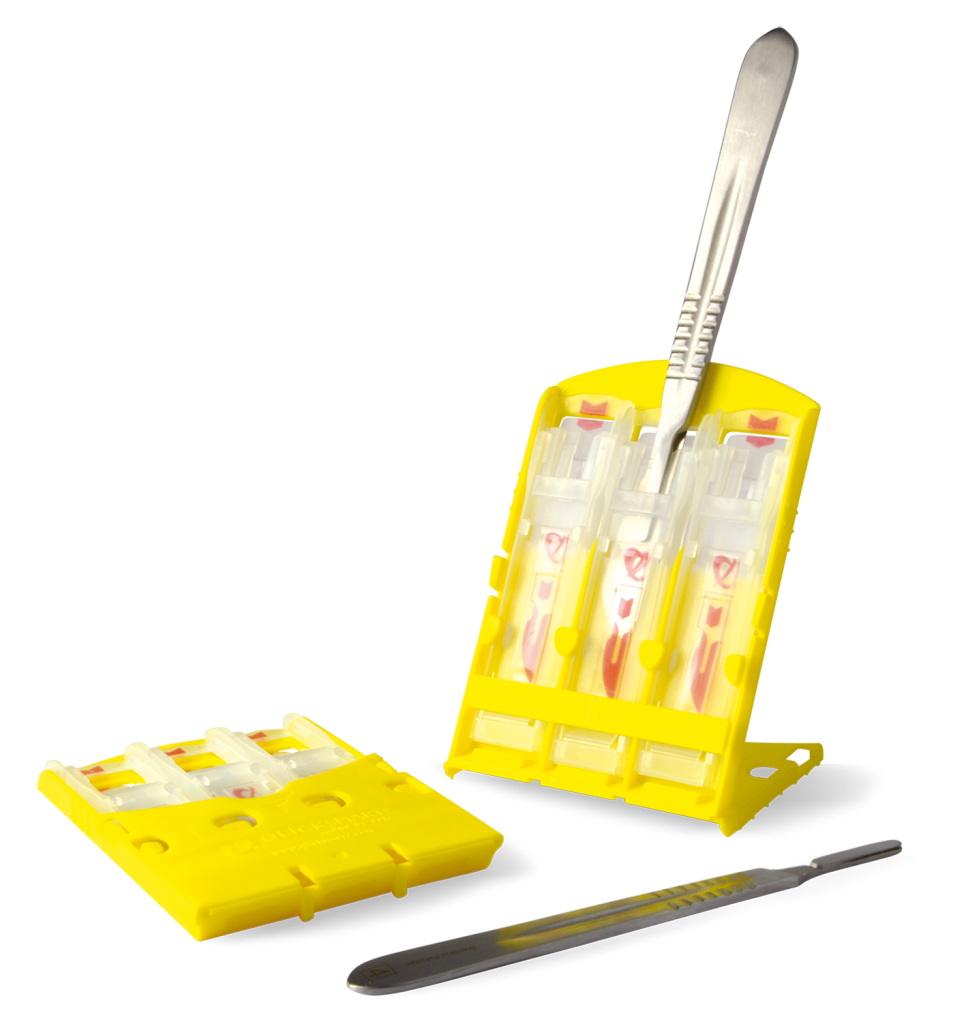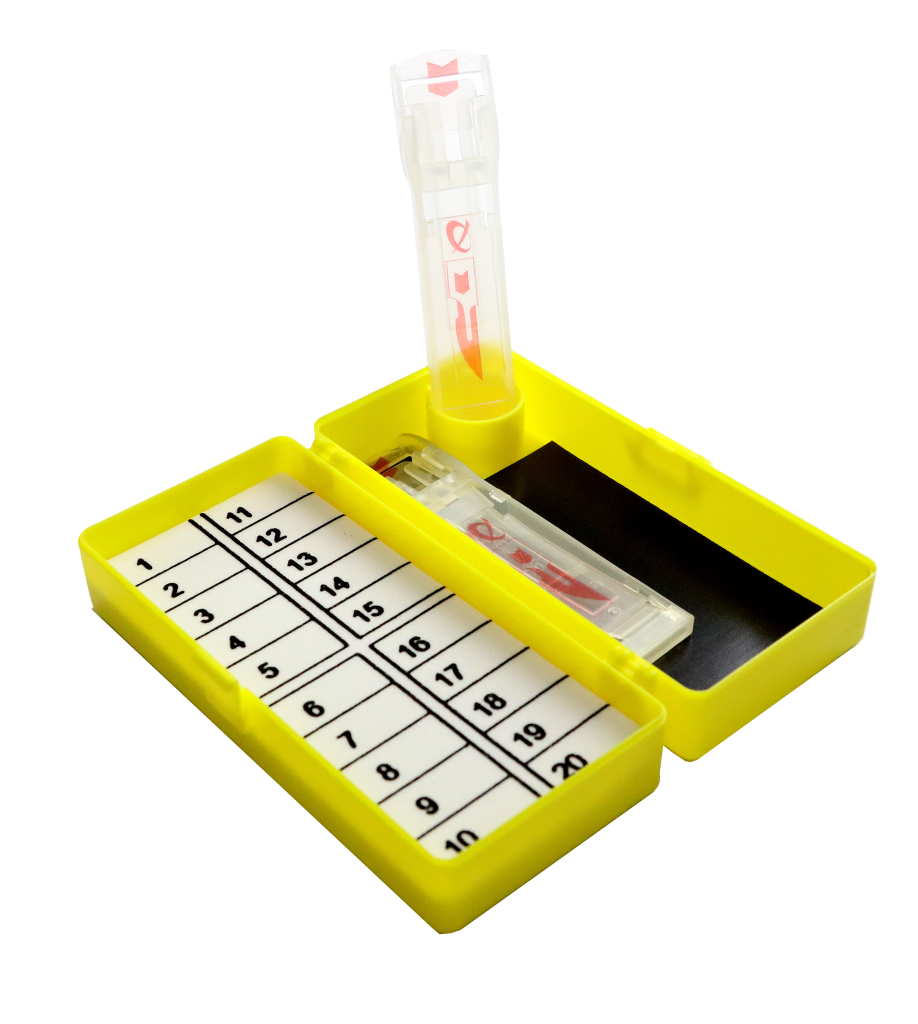Surgeons Are Saying “No” to Safety Scalpels
Although it has previously been thought that safety scalpels would improve sharps safety, evidence suggests this may not be the case. The term “safety scalpel” is a misnomer- there is no supportive proof that safety scalpels are actually safe.

Active devices such as safety scalpels may provide a false sense of security to the end-user, which can compromise use of the safety feature and interrupt proper disposal of the device.
Safety scalpels also suffer from low adoption rates among surgeons. For example, in 30 hospitals across Australia and the United States, 98% of surgeons reported a dislike of safety scalpels, indicating a stronger preference for traditional scalpel handles.
Authors of a 2018 study from the Netherlands state that safety features in “safety scalpels” often result in incorrect disposal of needles and unsafe safety-engineered device handling, which may be due to lower perceptions of injury risk. This is of particular concern, given that one third of needle-stick and scalpel injuries have been found to be associated with improper disposal.
Therefore, it is evident that safety scalpels are not a safer option, particularly in operative settings. Not only do they provide a false sense of safety, leading to incorrect disposal, but they also suffer from incorrect activation and low adoption rates.
Traditional Scalpels + Safety Procedures Are More Effective
Compared to active safety scalpels, safety procedures and processes involving traditional metal scalpel handles have been found to be more effective at reducing sharps injuries. Procedures such as combining the Hands-Free Passing Technique with passive(single-handed) scalpel blade removers is recommended as this can potentially prevent 5 times as many injuries as safety scalpels.

Qlicksmart’s range of sterile scalpel blade removers like the BladeCASSETTE is primarily used to remove and contain scalpel blades in the Operating Room, or anywhere sterile equipment is necessary. This easy-to-use solution provides a better alternative to safety scalpels, allowing surgeons to maintain their preferences for the standard metal handle.

Another innovative sterile scalpel blade remover from Qlicksmart is the combination device BladeNeedleSYSTEM, which works as a 20-count needle counter and comes with two safety-engineered scalpel blade removal cartridges for safe and efficient sharps removal, containment, counting, and disposal. Both the BladeCASSETTE and BladeNeedleSYSTEM provide the following features:
- Single-handed blade removal and a Passive safety mechanism for scalpel blade removals
- Audible “click” sound and tactile feedback to signify blade is safely contained
- Compatible with standard handles, Baron handles, Lawton long handles, and cylindrical handles
- Compliant with international regulations, standards, and guidelines
With little to no training required, Qlicksmart’s sterile single handed blade removers are proven to reliably reduce the risk of scalpel cuts and injuries.
References:
- Sinnott M, Wall D. Scalpel Safety: How safe (or dangerous) are safety scalpels?, International Journal of Surgery, Volume 6, Issue 2, 2008,Pages 176-177, ISSN 1743-9191, https://doi.org/10.1016/j.ijsu.2007.01.010.
- Schuurmans J, Lutgens SP, Groen L, and Schneeberger PM. Do safety engineered devices reduce needlestick injuries The Journal of Hospital Infection. 2018; Retrieved from https://www.journalofhospitalinfection.com/article/S0195-6701(18)30264-0/abstract.
- Dulon M, Stranzinger J, Wendeler D, Nienhaus A. Causes of Needlestick and Sharps Injuries When Using Devices with and without Safety Features. International Journal of Environmental Research and Public Health. 2020; 17(23):8721. https://doi.org/10.3390/ijerph17238721
- Fuentes, Hector & Collier, James & Sinnott, Michael & Whitby, Michael. (2008). “Scalpel safety”: Modeling the effectiveness of different safety devices’ ability to reduce scalpel blade injuries. International Journal of Risk and Safety in Medicine. 20. 83-89. 10.3233/JRS-2008-0428.
- Sinnott, M., & Shaban, R. Z. (2010, March). Scalpel Safety, not “Safety Scalpel”: A New Paradigm in Staff Safety. [Abstract]. Retrieved from https://www.researchgate.net/publication/257625235_Scalpel_Safety_not_Safety_Scalpel_A_New_Paradigm_in_Staff_Safety

